March 06, 2024
NEWS & TOPICS
A Taste of Toya’s Great Outdoors in Winter
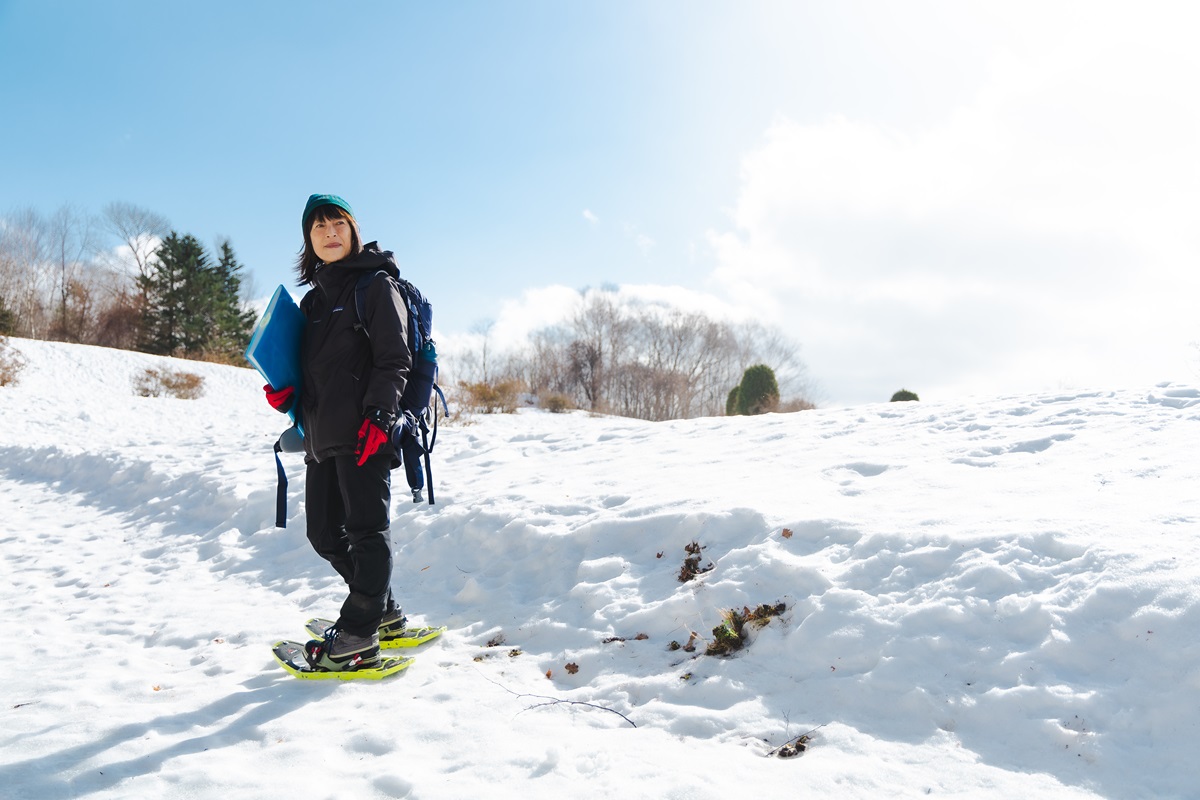
Having experienced a series of major eruptions in the last 115 years, Mt. Usu is among the most volcanically active parts of Japan. Yet that hasn’t stopped it and neighboring Lake Toya from becoming both a popular spot for outdoor activities and a place to unwind in soothing hot springs. The area has year-round attractions, but in winter offers a chance to experience Hokkaido’s snowy landscapes without having to work up the energy to hit the ski slopes of places like ever-popular Niseko 40km to the north.
Snowshoeing in the Shadow of a Volcano
You could be forgiven, if (like me) your image of snowshoeing is of a pursuit for experienced outdoor types – people trudging through deep snow in remote, frozen lands. So, there was an element of trepidation when my guide for the day, Rie Egawa, was driving us toward a snowshoe tour around the base of Showa Shinzan, a 402-meter peak that rose out of wheat fields during the Mt. Usu eruptions of 1944 to 1945. In reality, it turned out to be surprisingly easy, even for someone (also like me) who can barely stand up in skis.
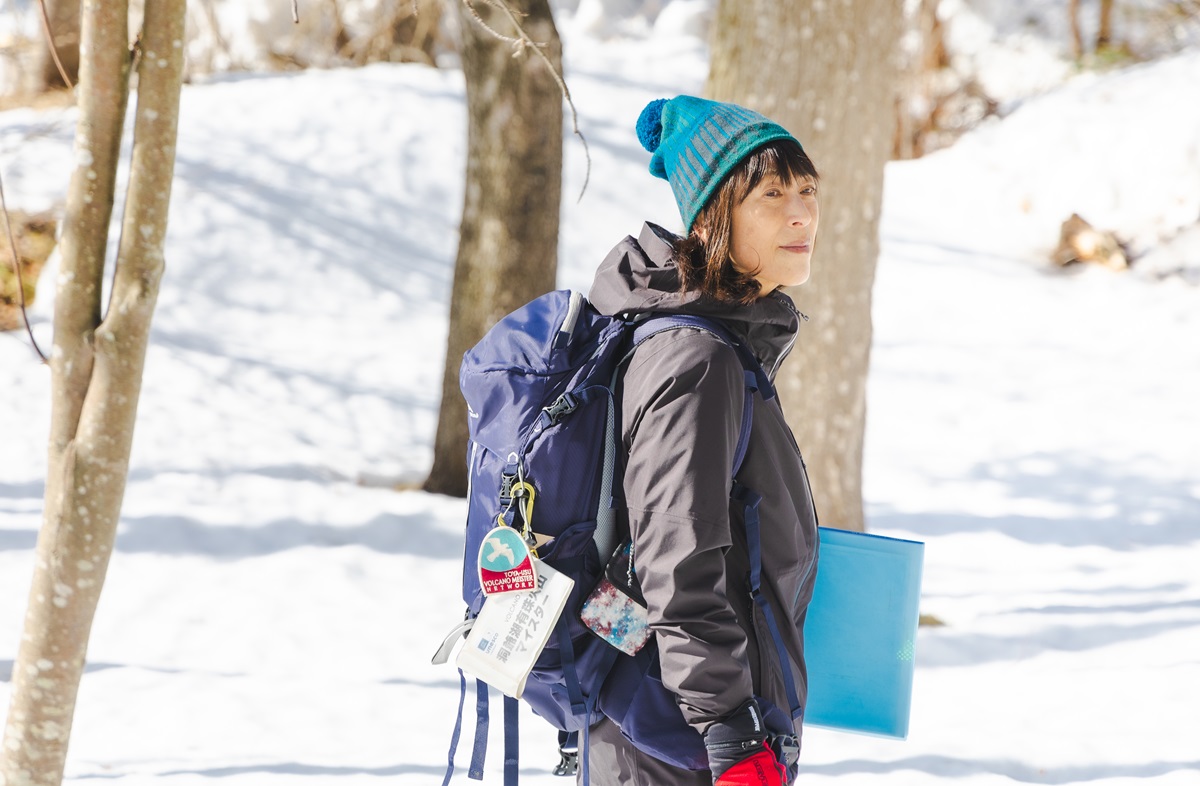
Rie Egawa, Hokkaido certified Adventure Travel Guide
Gear-wise, you can rent snowshoes and boots from your guide, and then it only takes a few minutes to tie on the snowshoes and get used to walking. You just need to be prepared for temperatures that can drop as low as minus-10C and then keep in mind a few simple guidelines. As Egawa explains, walk normally but without lifting your feet too high, turn around instead of reversing, and keep your feet ever so slightly pointed outwards, so as not to step on your own snowshoes.
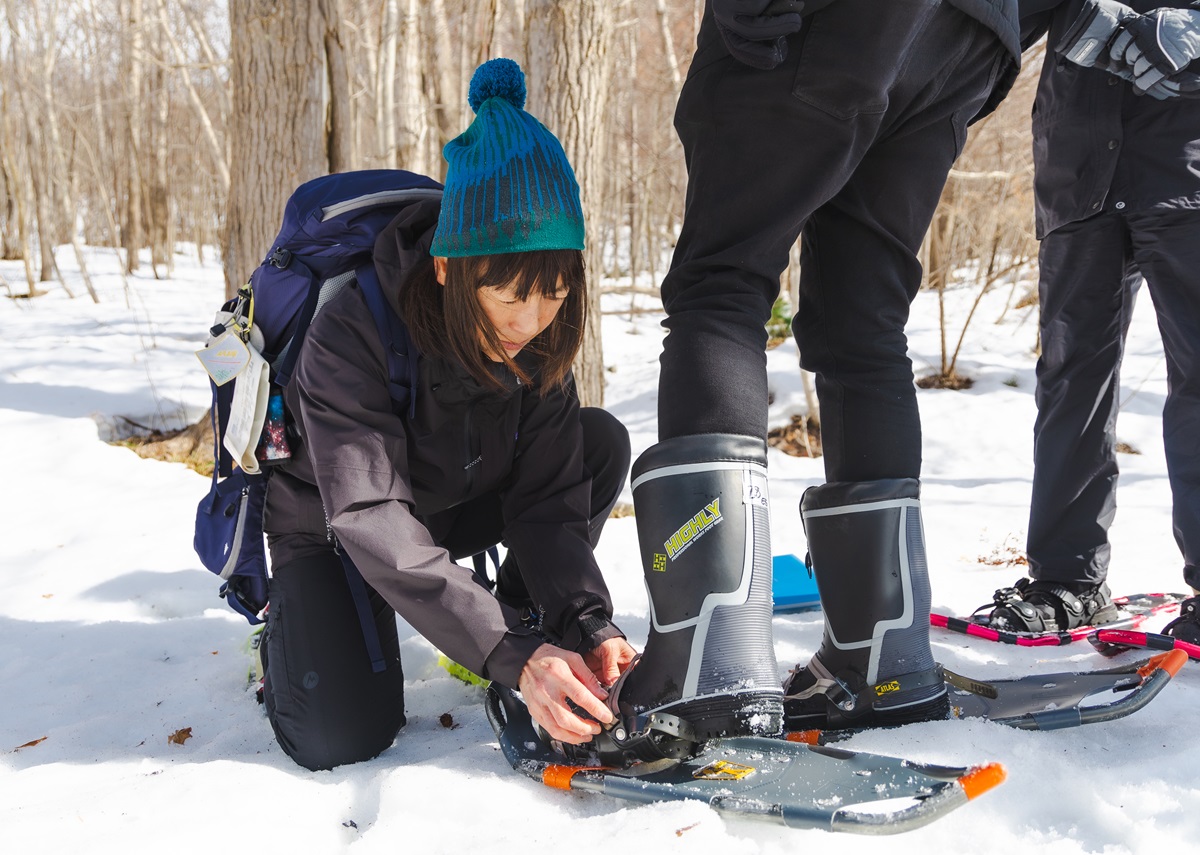
As well as having someone to teach you the basics, snowshoeing with a guide can also open your eyes to the little details you might otherwise have missed. We stop to examine the tracks of a deer that penetrate several inches into the snow, then see the faint paw prints of something much lighter – likely a Hokkaido squirrel. While the near-bare branches of the new forest growing around the mountain’s base initially seem uninformed, with Egawa’s help the yellow tints of willow begin to distinguish themselves too.
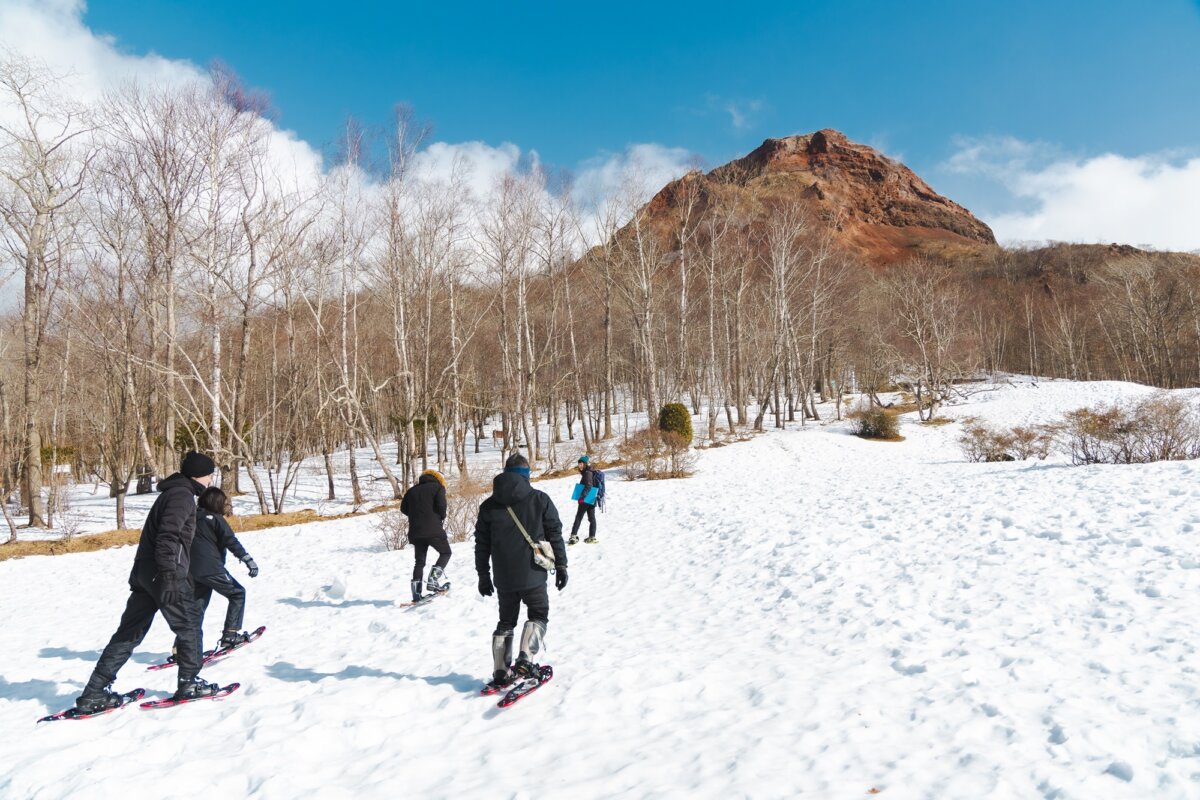
There are also human stories to tell as we walk through the snow, like that of local postmaster Masao Mimatsu, who meticulously documented the rise of Showa Shinzan during the 1943-44 eruptions, providing invaluable data and diagrams that helped shape Japanese volcanology. Incredibly, he would go on to buy the mountain – something detailed by the small Masao Mimatsu Memorial Hall (https://sobetsu-kanko.com/en/spot/mimatsu)at Showa Shinzan’s base.
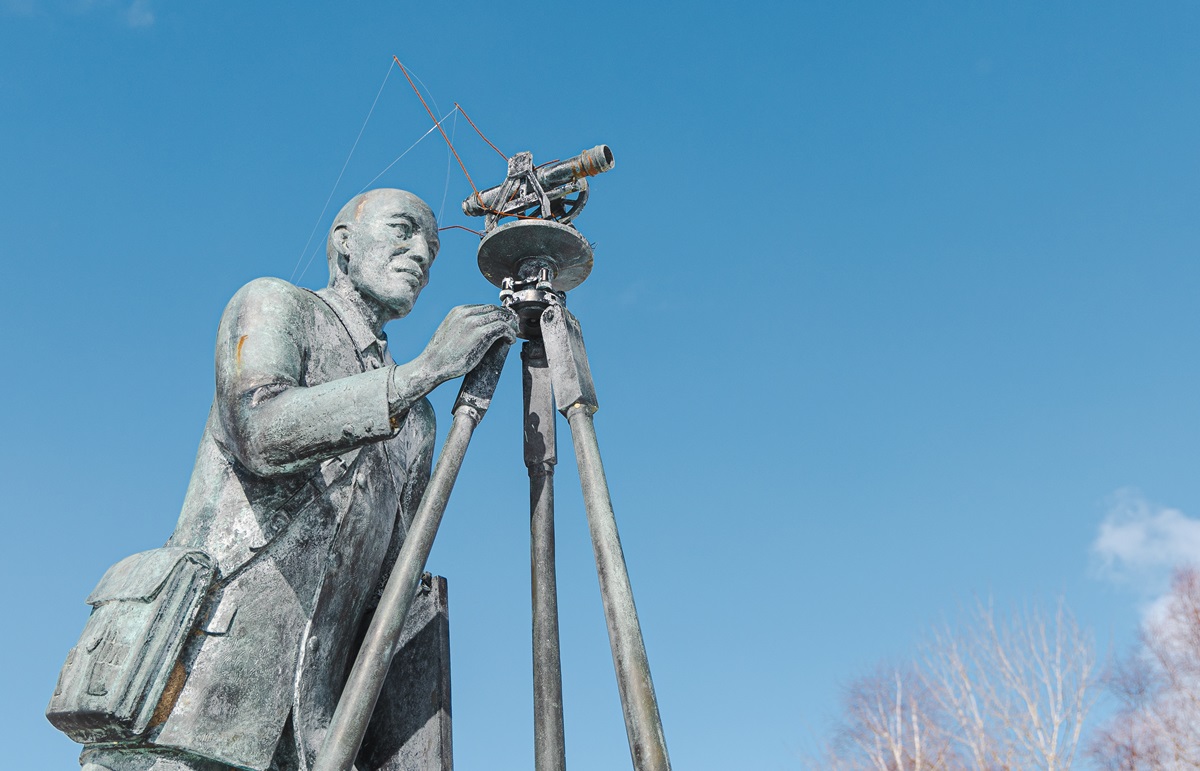
The Statue of Masao Mimatsu
The Mt. Usu Ropeway
After snowshoeing, we head for an even easier activity, taking the ropeway up near to the 733-meter summit of Mt. Usu, where it’s possible to trek on a boardwalk around Usu’s outer rim or just grab a coffee and enjoy the scenery. With an icy wind blowing, we take in sweeping views of Lake Toya and Showa Shinzan, then walk a little higher for views of the Ginnuma Crater – the largest of the craters created during Usu’s 1977 eruptions.
In an area that has been repeatedly reshaped by eruptions, Ginnuma is arguably the starkest transformation. The barren crater looks like the entrance to a Bond villain’s secret lair, with wisps of smoke ominously rising from its center, and several of Usu’s jagged peaks looming above. But when Egawa pulls out pictures of the mountaintop pre-1977, the contrast is jaw dropping: an alpine pasture, full of greenery and flowers, with families picnicking next to a lotus pond.
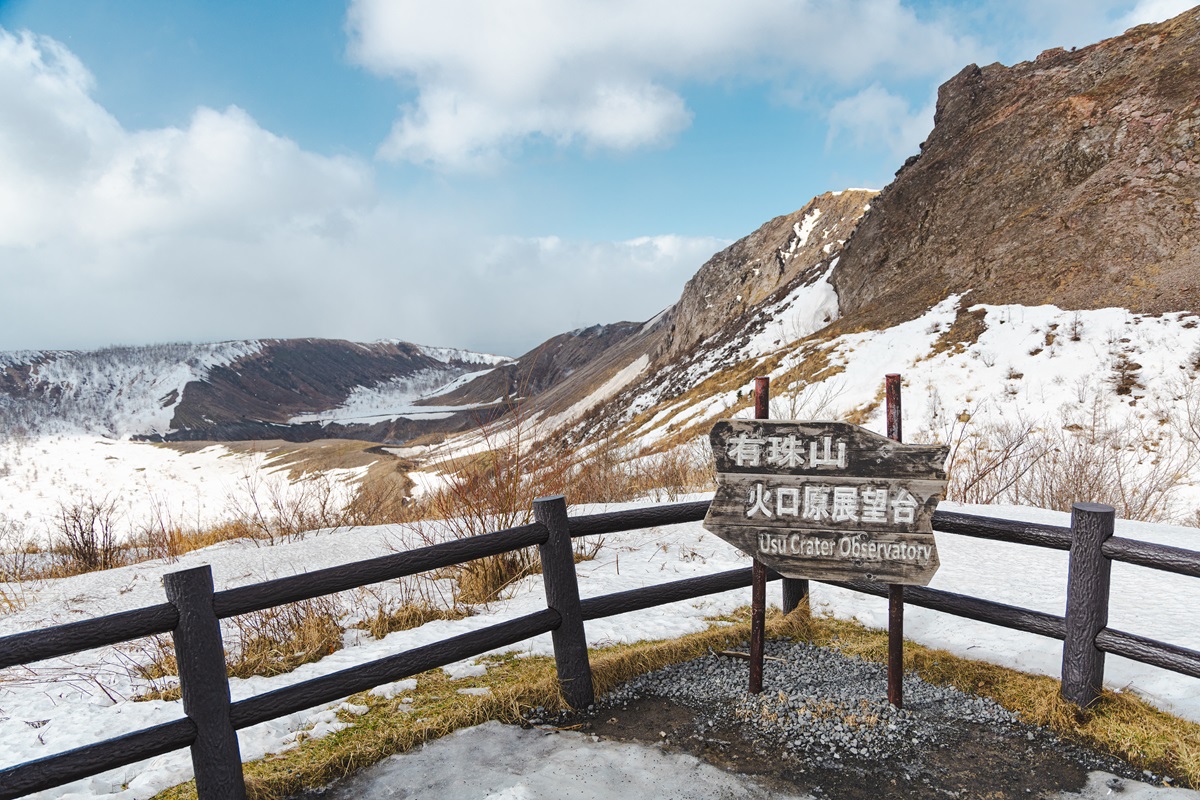
Ginnuma Crator of Mt. Usu
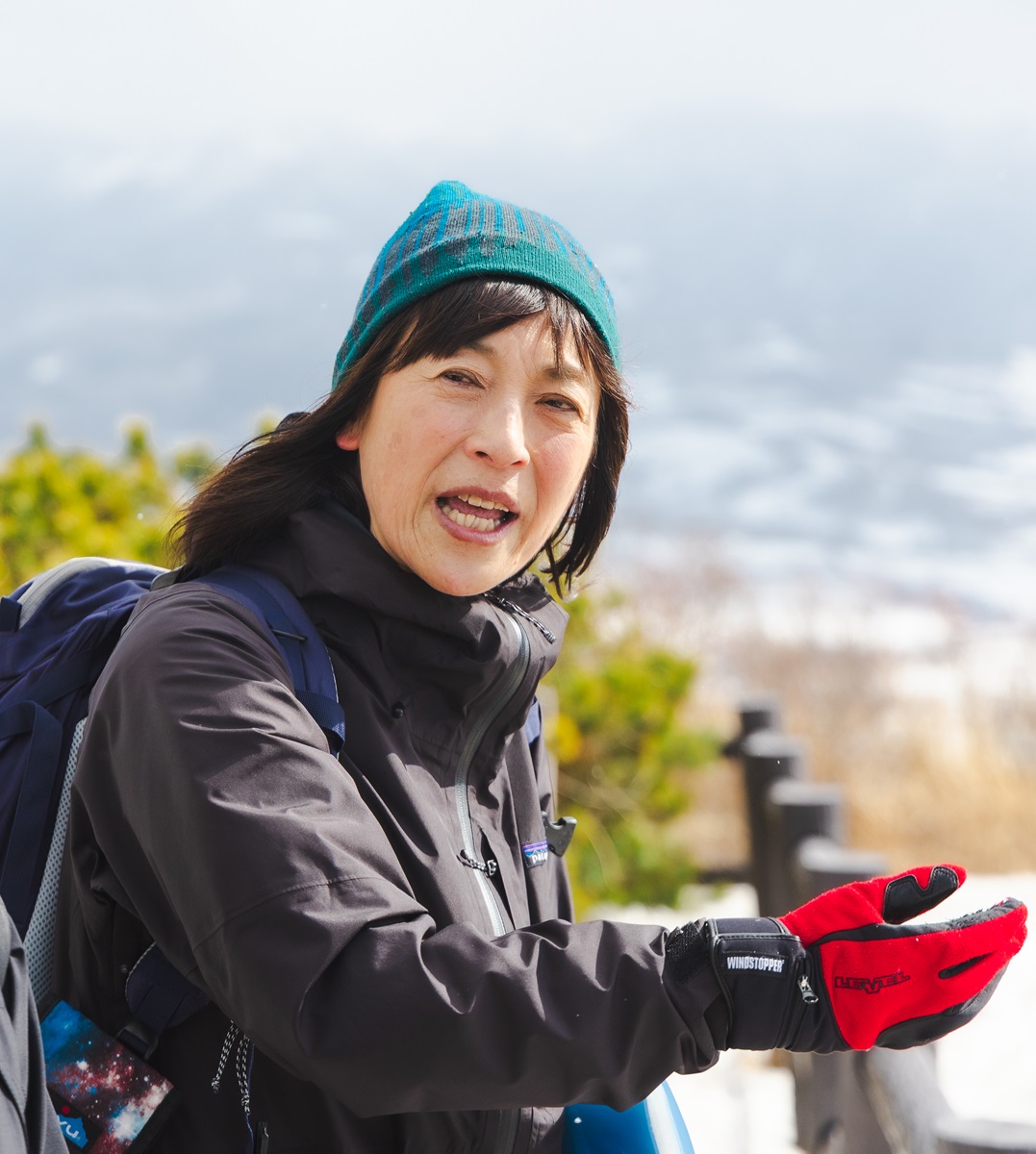
Toya’s Hot Springs
Beyond snowshoeing and Mt. Usu, there are plenty of other light activities possible in Toya in winter. You could visit the and Volcano Science Museum to learn about the area’s formation and recent eruptions. Then you could add a boat trip on Lake Toya or try a spot of snow rafting and sledding at the Snow Park.
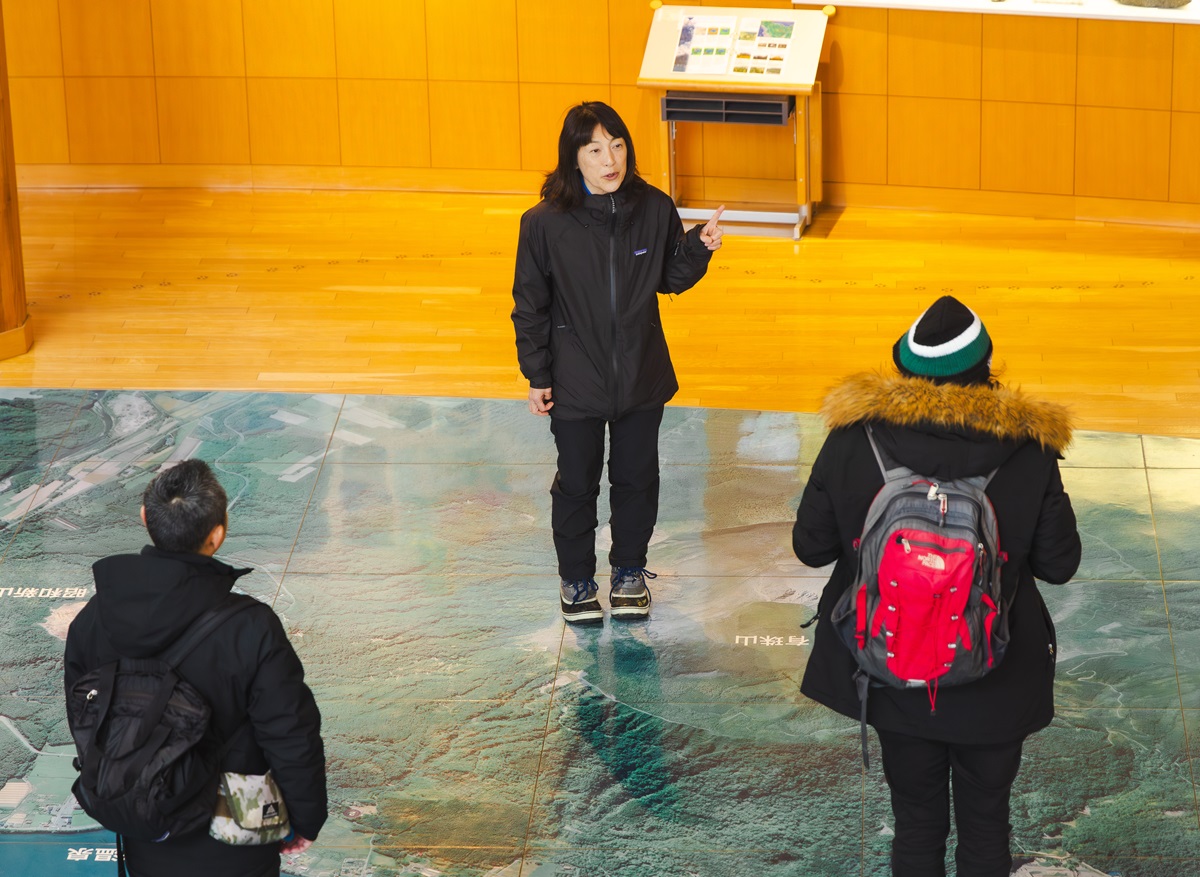
Egawa-san explaining about the volcanic activities and the surrunding area at the Toyako Visitor Center
After saying goodbye to Egawa-san, I head instead for a warming soak in one of Toya’s hot springs; something uncovered by the eruptions of 1910. Many of the hotels here have their own mineral-rich public baths – some open-air with views of the mountains and some also open to non-guests – but if you are after something more casual there are also a dozen footbaths and handbaths scattered around town, each said to have its own traits.
That includes the common benefits listed at hot springs around Japan, such as the ability to soothe aches and pains or relieve fatigue, but Toya also throws in a few playful claims you are unlikely to find elsewhere: one handbath is said to promote a happy marriage, another calls itself a handbath for good food. What can’t be argued is that they warm you up after a day out in the snow.
Interview and writing by Jiji Press Ltd. (https://jen.jiji.com/)
Learn more about Lake Toya area (https://www.laketoya.com/en/)
- HOME
- NEWS & TOPICS
- A Taste of Toya’s Great Outdoors in Winter


